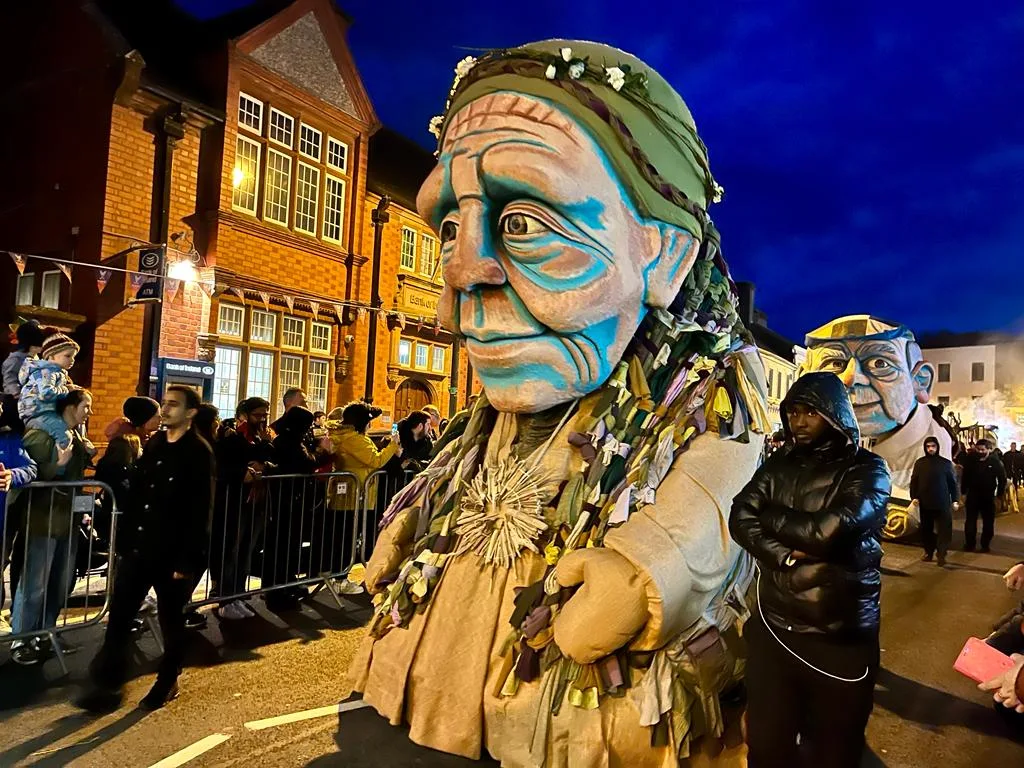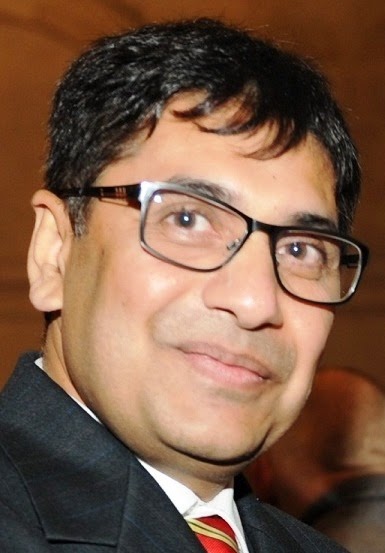Mystical Connection
Mystical Connection: Similarities Between Indian Pitru Paksha and Irish Halloween
The article explores the authentic origins of Halloween in Ireland, tracing it back to the ancient Celtic tradition of Samhain.
As I reside in the ancient traditional land of Ireland, particularly in County Meath, where the roots of Celtic civilisation originally sprouted and spread to various corners of the world, I'm fortunate to witness the rich historical tapestry that makes this region unique. The story of the authentic origins of Halloween in Ireland has been uncovered through the examination of evidence gathered from archaeological digs, legends, myths, and Celtic history.
Irish folklore, deeply intertwined with the Celtic heritage that originates in these very lands, traces Halloween back to the ancient Celtic tradition of Samhain, which the old Irish aptly termed "summer's end." Samhain marked not only the conclusion of the harvest season but also the commencement of the New Year, symbolising the cyclical nature of life and the eternal ties to this ancient landscape.
The Trim and Athboy in County Meath, host to the Púca Festival, plays an integral role in keeping these timeless traditions alive. It is here, in the heart of County Meath, that we find references in old manuscripts that speak of Tlachtga or The Hill of Ward, a site that witnessed grand Samhain gatherings. At Tlachtga, the ancient Irish kindled a fire, a beacon from which all fires across Ireland were rekindled, signifying the unifying spirit of the land. Recent archaeological excavations at this very hill have unveiled the echoes of feasting and celebrations that transpired over 2,000 years ago, reminding us of the profound cultural heritage embedded in the soil of County Meath. Today, the Boyne Valley, with its meandering river and historic landscapes, stands as a testament to the enduring importance of this region in preserving the traditions of Halloween in Ireland.
County Meath, particularly the Trim and Athboy regions, plays a pivotal role in preserving these Halloween traditions, with references to the Hill of Ward and Samhain gatherings.
Each site carries its unique tale, narrating the stories of the ancient past that continue to shape the present. In places like Oweynagat, the "cave of the cats," at Rathcroghan in County Roscommon, the veil between our world and the Otherworld thins each Samhain, allowing otherworldly beings to emerge, providing further insight into the mystical beliefs that have been cherished for generations.
The association of Halloween with the belief in the closeness of the Otherworld and the return of the Dead is an integral part of the cultural fabric woven throughout Ireland. County Meath, in particular, holds a special place in preserving these traditions.
Wearing costumes and masks isn't just a superficial aspect of the celebration. It is a profound form of protection, ensuring that fairies couldn't abduct you while offering a chance to startle your neighbours merrily. This tradition of playing tricks on the unsuspecting, rooted in the age-old customs of this region, may very well be the origin of the widespread practice of trick-or-treating, illustrating the enduring legacy of County Meath's contribution to Halloween and the broader Celtic culture.
Archaeological excavations in County Meath unveil the echoes of celebrations from over 2,000 years ago, highlighting the deep cultural heritage of the region.Other significant Halloween sites like Oweynagat in County Roscommon and the association of Halloween with the Otherworld and the Return of the Dead are discussed.
Traditions and rituals have always been a significant aspect of human culture. They reflect a society's beliefs, values, and historical journey. India's Pitru Paksha and Ireland's Halloween, two age-old observances from vastly different corners of the world, are two such traditions that have come under the spotlight for their striking similarities. In a fascinating revelation, researchers have unearthed these connections, shedding light on the profound commonalities between these seemingly unrelated rituals, which extend beyond geographical boundaries.
Pitru Paksha in India
Pitru Paksha, also known as Mahalaya Paksha, is 16 days in the Hindu lunar calendar, typically falling in the lunar month of Bhadrapada (September-October). This sacred observance is dedicated to honouring deceased ancestors. The belief during Pitru Paksha is that the spirits of the departed return to the earthly realm during this time, and thus, it is an essential period for performing rituals to pay homage to one's forebears. The rituals encompass offerings, prayers, and acts of gratitude to ensure the well-being of the deceased in the afterlife. In this way, Pitru Paksha has been an integral part of Indian culture, deeply rooted in the belief in the eternal connection between the living and the dead.
The article reveals the connection between Halloween in Ireland and India's Pitru Paksha, two seemingly unrelated traditions, both rooted in the belief in the eternal relationship between the living and the dead. Common themes and rituals are identified, including the recognition and reverence of the spirit world, intricate patterns, feasting, lanterns and lights, and costumes. Both Pitru Paksha and Halloween celebrate the cycles of life and death, emphasising the shared human desire to honour the departed and bridge the gap between the living and the dead.
Irish Halloween
Halloween, as celebrated today, is a time of costumes, pumpkin carvings, and trick-or-treating. However, this modern-day extravaganza has its roots in the ancient Celtic festival of Samhain. Samhain marked the end of the harvest season and the beginning of the dark, cold winter. What makes this festival relevant to our discussion is that the Celts believed that during Samhain, the boundary between the living and the dead was at its thinnest, thus allowing spirits to roam the Earth. It was a time to appease the spirits, as well as a time of harvest and the honouring of ancestors.
Common Themes and Rituals
These two traditions, despite their geographical separation and cultural differences, remarkably share many common themes and rituals. One of the most apparent commonalities is the profound spiritual connection they both possess. Pitru Paksha focuses solely on ancestral spirits, whereas Halloween acknowledges a broader spectrum of the deceased. However, the central theme of recognising and revering the spirit world binds them together.
Both traditions involve intricate rituals. In Pitru Paksha, families perform Tarpan (offering of water), Pinda daan (offering of rice balls), and food offerings to their ancestors. These rituals are believed to ensure the peace and prosperity of the deceased in the afterlife. Similarly, during Halloween, rituals are an essential part of the celebration. This includes lighting candles for the deceased, offering wandering spirits offerings, and visiting cemeteries to pay respects to the dead.
Feasting is another common element in these traditions. In India, families prepare the favourite dishes of their ancestors during Pitru Paksha. In Ireland, food offerings such as "Soul Cakes" are distributed to wandering spirits. Sharing food with the hearts symbolises the belief in the interconnectedness between the living and the dead.
Lanterns and lights are also integral to both Pitru Paksha and Halloween. In Pitru Paksha, lighting lamps is a common practice to guide the spirits of ancestors. In Ireland, carved pumpkins or jack-o'-lanterns serve a similar purpose, illuminating the path for spirits during the night of Samhain.
The parallels between these traditions highlight the universality of specific human experiences and beliefs, showcasing the rich tapestry of human culture and spirituality that unites people across the globe.
Costumes, although in different forms, are an intriguing parallel. In Pitru Paksha, traditional attire is worn during the rituals, and it serves to distinguish the living from the spirits. On Halloween, the tradition of wearing costumes emerged to disguise oneself from spirits who might return during Samhain. This practice possibly finds its roots in the same ancient fear of encountering wandering souls.
Both Pitru Paksha and Halloween celebrate the cycles of life and death. Pitru Paksha reminds us of our roots, the legacy of our ancestors, and the connections that transcend death. On the other hand, Halloween reflects on the passage of seasons and the impermanence of life, alluding to the idea that death is not the end but a transition to another state.
Discovering these intriguing parallels between India's Pitru Paksha and Ireland's Halloween proves the universality of specific human experiences and beliefs. These commonalities remind us of the profound connection that binds humanity across the globe, transcending time and place. These traditions, though geographically distant, showcase the shared human desire to honour the departed, to bridge the gap between the living and the dead, and to recognise the eternal cycles of life and death. It's a revelation that invites us to explore and appreciate the rich tapestry of human culture and the deep-seated spirituality that unites us all.
Prashant Shukla, the article's author, is a prominent Irish-Indian known for his contributions to cultural exchange, renewable energy, and economic development. As the Chairman of the Ireland India Council, he facilitates connections between Ireland and India, fostering mutual understanding. He is also the visionary founder of Eirsun Limited, a leading provider of renewable energy solutions in Ireland, contributing to the nation's sustainable development. Prashant Shukla's multifaceted endeavours encompass sustainability, economics, and cross-cultural appreciation, highlighting his commitment to these vital aspects.




Comments